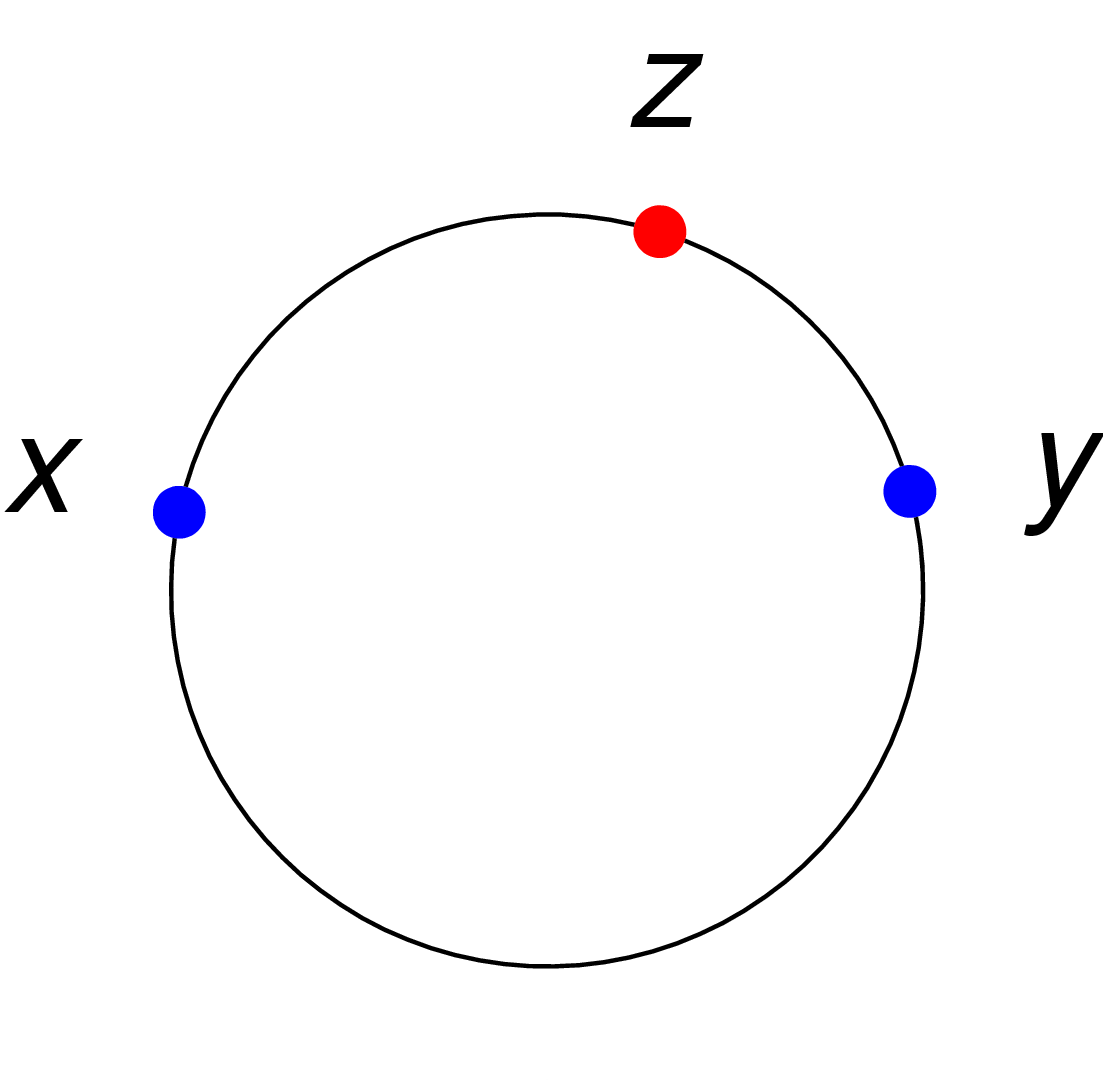Convex metric space on:
[Wikipedia]
[Google]
[Amazon]
 In
In
 * Any
* Any
mathematics
Mathematics is an area of knowledge that includes the topics of numbers, formulas and related structures, shapes and the spaces in which they are contained, and quantities and their changes. These topics are represented in modern mathematics ...
, convex metric spaces are, intuitively, metric space
In mathematics, a metric space is a set together with a notion of '' distance'' between its elements, usually called points. The distance is measured by a function called a metric or distance function. Metric spaces are the most general setti ...
s with the property any "segment" joining two points in that space has other points in it besides the endpoints.
Formally, consider a metric space
In mathematics, a metric space is a set together with a notion of '' distance'' between its elements, usually called points. The distance is measured by a function called a metric or distance function. Metric spaces are the most general setti ...
(''X'', ''d'') and let ''x'' and ''y'' be two points in ''X''. A point ''z'' in ''X'' is said to be ''between'' ''x'' and ''y'' if all three points are distinct, and
:
that is, the triangle inequality becomes an equality. A convex metric space is a metric space (''X'', ''d'') such that, for any two distinct points ''x'' and ''y'' in ''X'', there exists a third point ''z'' in ''X'' lying between ''x'' and ''y''.
Metric convexity:
* does not imply convexity in the usual sense for subsets of Euclidean space
Euclidean space is the fundamental space of geometry, intended to represent physical space. Originally, that is, in Euclid's ''Elements'', it was the three-dimensional space of Euclidean geometry, but in modern mathematics there are Euclidea ...
(see the example of the rational numbers)
* nor does it imply path-connectedness (see the example of the rational numbers)
* nor does it imply geodesic convexity In mathematics — specifically, in Riemannian geometry — geodesic convexity is a natural generalization of convexity for sets and functions to Riemannian manifolds. It is common to drop the prefix "geodesic" and refer simply to "conv ...
for Riemannian manifolds (consider, for example, the Euclidean plane with a closed disc removed).
Examples
* Euclidean spaces, that is, the usual three-dimensional space and its analogues for other dimensions, are convex metric spaces. Given any two distinct points and in such a space, the set of all points satisfying the above "triangle equality" forms theline segment
In geometry, a line segment is a part of a straight line that is bounded by two distinct end points, and contains every point on the line that is between its endpoints. The length of a line segment is given by the Euclidean distance between i ...
between and which always has other points except and in fact, it has a continuum of points.
 * Any
* Any convex set
In geometry, a subset of a Euclidean space, or more generally an affine space over the reals, is convex if, given any two points in the subset, the subset contains the whole line segment that joins them. Equivalently, a convex set or a convex ...
in a Euclidean space is a convex metric space with the induced Euclidean norm. For closed set
In geometry, topology, and related branches of mathematics, a closed set is a set whose complement is an open set. In a topological space, a closed set can be defined as a set which contains all its limit points. In a complete metric space, a ...
s the converse is also true: if a closed subset of a Euclidean space together with the induced distance is a convex metric space, then it is a convex set (this is a particular case of a more general statement to be discussed below).
* A circle
A circle is a shape consisting of all points in a plane that are at a given distance from a given point, the centre. Equivalently, it is the curve traced out by a point that moves in a plane so that its distance from a given point is cons ...
is a convex metric space, if the distance between two points is defined as the length of the shortest arc on the circle connecting them.
Metric segments
Let be a metric space (which is not necessarily convex). A subset of is called a metric segment between two distinct points and in if there exists a closed interval